He learnt Mandarin to better understand Singaporean culture: A migrant entrepreneur's journey
He loves bantering with hawkers, and singing Teresa Teng love songs at karaoke. But when Abhishek Agrawal arrived from India nine years ago, he was living in a social bubble – until he reached out.
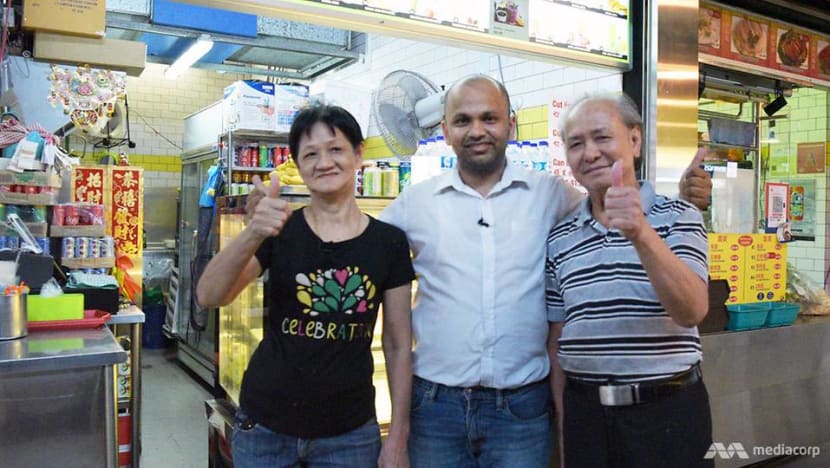
Abhishek Agrawal stops to chat with fruit-seller Lau Ah Keow and her husband in Mandarin, when he gets his lunch every day. Learning Mandarin has helped him form "deeper connections" like this, said Abhishek.
SINGAPORE: When Abhishek Agrawal greets fruit-seller Lau Ah Keow with his usual “good afternoon aunty!” in Mandarin, she no longer bats an eyelid.
She smiles instead at the 31-year-old from India who speaks her mother tongue with almost-native intonation.
And, when he struggles to find the Mandarin term for passionfruit, she patiently enunciates “bai xiang guo”, as he repeats carefully after her.
Some days, Abhishek, a tech entrepreneur, hangs out at their stall, chatting with Lau and her husband about their lives in Mandarin – they speak very little English.
“When I first heard him speak Chinese, I was so surprised,” said Lau, 65. “Not bad, it’s very clear and accurate. He comes every day to support me.”
It’s an unexpected acquaintanceship that has sprung out of Abhishek’s intrigue with Singaporean culture ever since he arrived in 2011, and his desire to form “deeper connections” with locals.
This spurred him to step outside his comfort zone, in more ways than one.
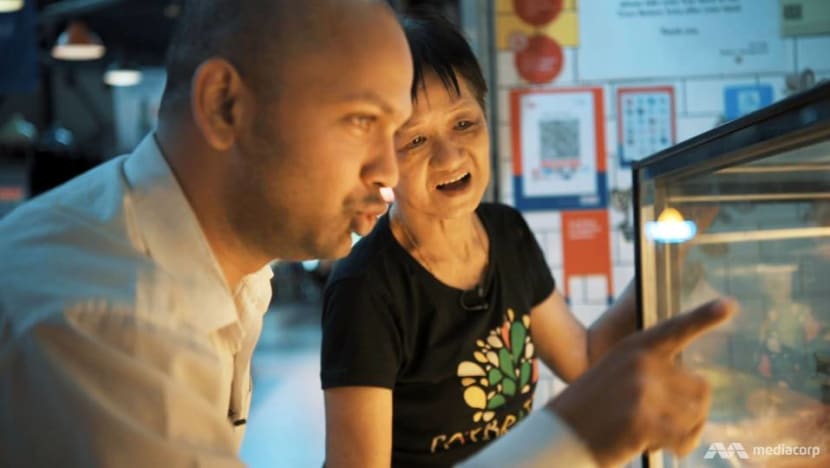
“To be honest, I have noticed some people who have stayed in Singapore longer than I have, but have not really assimilated well, who stay pretty much with their own community,” he said.
“But my mother always encouraged us to be open-minded, go out and talk to everybody.”
GETTING OUT OF A VACUUM
This was easier said than done when Abhishek, who hails from Bilaspur in central India, arrived nine years ago as a biomedical engineering student at Nanyang Technological University (NTU). It was his first time in a foreign country.
“I didn’t have many friends,” he said. “I was just by myself doing project work, not reaching out, not really integrating.”
But realising how much of a “vacuum” he was in those first few months, he started looking for ways to volunteer. He reached out to organisations for opportunities to tutor children from vulnerable families, deliver charity meals, and clean up the homes of elderly folks living alone.
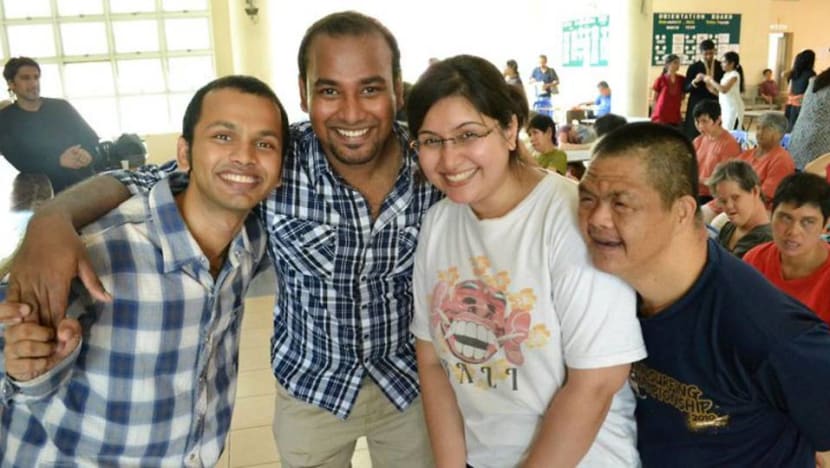
At school, supportive laboratory mates helped him adapt to Singapore, and expanded his palate to local food like chilli crab. “For six months I’d lived on prata and curry. I didn’t know there was chicken rice and other local dishes.”
Still, Abhishek felt on the fringe in some ways. For instance: Local traditions like lion dance and Chinese opera performances he’d witnessed in his HDB estate puzzled him.
“Sometimes, in group discussions, friends would speak Mandarin with each other and I couldn’t catch head or tail of it,” he added.
But rather than feeling sorry for himself, Abhishek saw this as a barrier to break through. “Feelings don’t yield results, your effort does,” he said, ever the practical engineer.
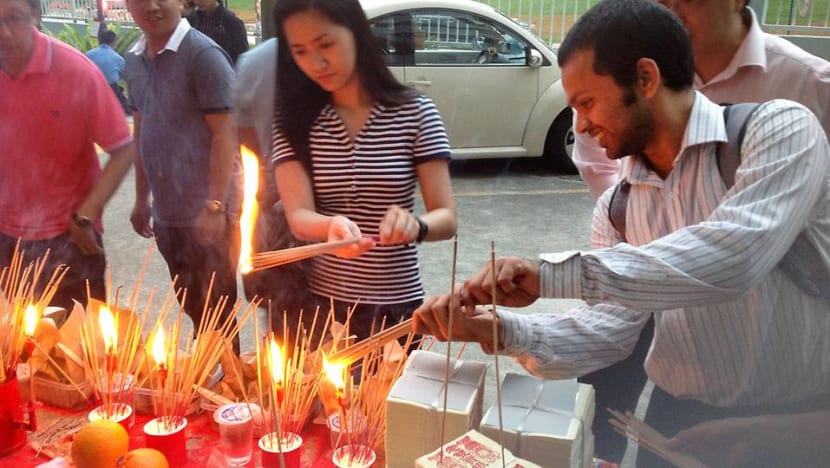
THAT LANGUAGE CONNECTION
His solution? To learn Mandarin. Shortly after he finished his thesis and found work with an oil and gas company, he attended Chinese lessons for six months at SGP International Management Academy (SIMA).
The complex new language was more frustrating than he’d expected (“If someone could just take the four tones out of Mandarin, life would be so much easier,” he quipped in lament).
But, said his teacher Liu Jing: “He was very hardworking and eager to learn. He asked questions often.” She used songs to help students learn, and Abhishek grew to love belting out legendary Teresa Teng love songs.

He also found unexpected help from strangers. “When I travelled on the MRT, I’d have my Mandarin textbook in hand,” he recalled. “Some people would take an interest, come over and try to teach me.”
He enthusiastically practised his fledgling Mandarin with colleagues or hawkers. “The first thing they want to know is, can I really speak it – or did I learn this one line to try to impress them? So they’d cross-examine me.”
"I would say there are two phases to my life in Singapore: Before and after learning Mandarin," he added. "I made deeper connections because we could converse."

Abhishek is game to delve into Malay or Tamil next. He already has a smattering of Hokkien and Malay words like “kiasu”, “jialat” “boleh” and “sedikit”.
“I’m ready to move on to another language and understand another culture,” he said.
MORE THAN A LANDLORD
But reaching out goes both ways – sometimes it takes somebody else to reach back.
WATCH: Breaking down barriers (4:58)
For six years as a tenant, Abhishek had stayed with Indian and Malay families. In 2017, his landlord then died suddenly, and he was looking for a new place to rent. He hoped to live with a Chinese family this time.
However, at least half the agents he approached asked about his race, he said. Their clients, he was told, were not keen on an Indian tenant.
One evening, he was introduced to a prospective landlord, 77-year-old Richard Huang. When they met at the latter’s four-room flat, the old man greeted Abhishek with “namaste”, his hands pressed together in the customary Hindi greeting.
“I was pleasantly surprised… His kindness touched me.”
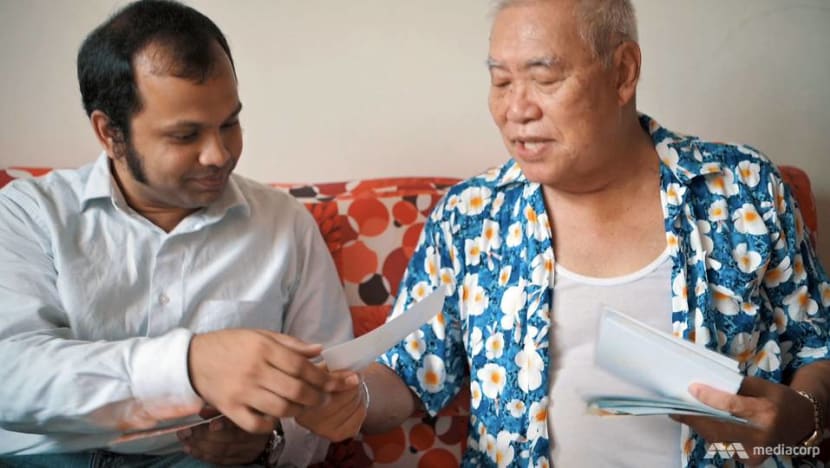
They hit it off, and Abhishek described how “Uncle” Richard became more than just a landlord and somewhat of a father figure.
They talked about “anything under the sun”. When the retiree went on one of his many trips around the world, he’d bring back food or mementoes for his young flatmate. “That’s something a family member would do,” Abhishhek said.
The one thing that made Richard nag like an exasperated parent sometimes, was Abhishek’s absentmindedness; for example, “he’ll wash his clothes and then leave them in the washing machine,” said the retiree.
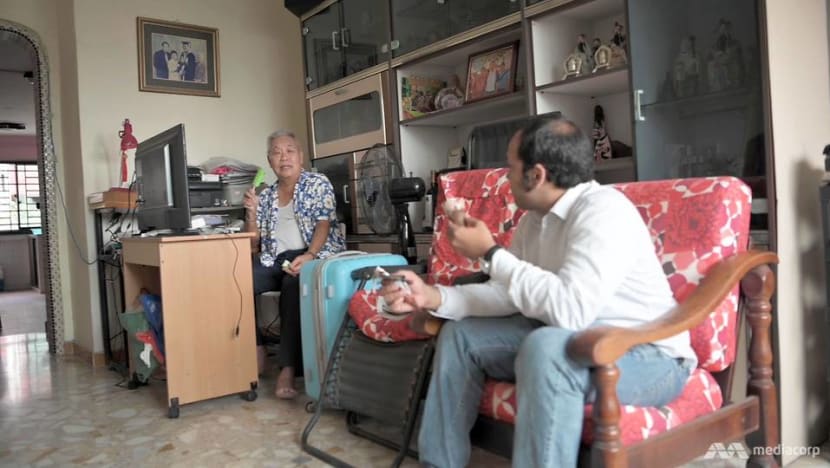
But Richard notes the long hours Abhishek works and how he’s always tired. “I know he’s a very busy man, so I’ll help him hang his clothes.”
ADDING VALUE TO SINGAPORE
The reason Abhishek is so busy these days? His start-up, Kinexcs, which is aiming to launch its key product this year – a wearable device to help patients recovering from knee surgeries.
Called KIMIA, it helps to remotely monitor and analyse their rehabilitation progress. It means patients could soon not have to travel to the therapist’s office for each session, which can be inconvenient for the elderly.
The company is in talks with local hospitals to pilot KIMIA, and it could start benefitting patients here from around October.
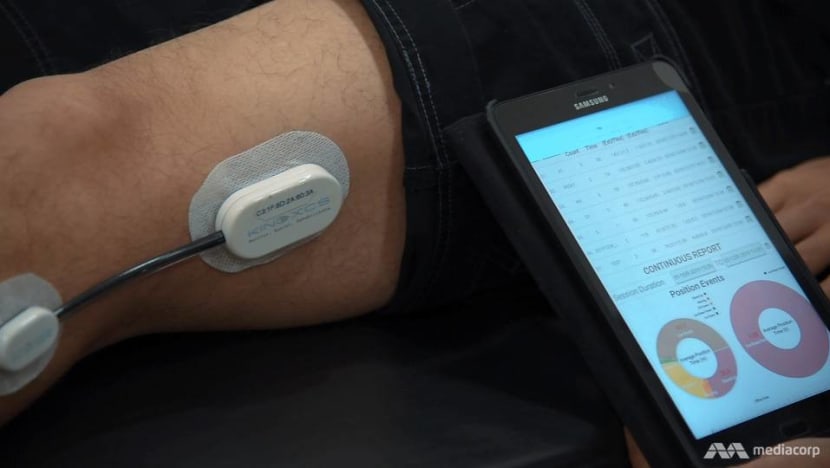
For Abhishek, there’s a personal dimension to this. “I’ve seen my father struggle with a spinal problem for 25 years,” he said. “I really wanted to build something that can add value to people’s lives.”
Abhishek was working in NTU as a research associate when he met the Singaporean mentor who would become his business partner, Jagjit Singh.
They had “great chemistry” and were both interested in wearable technology. Between September 2014 and February 2015, the pair participated in six hackathons – and won five. Fired up, they co-founded Kinexcs, a medical technology company.
In 2017 alone, their start-up attracted some S$580,000 in investments, including from global venture capital firm SOSV and SGInnovate.
Of the eight full-time members of the Kinexcs team, five are Singaporeans and one a Permanent Resident (PR). “I hope that I can contribute back to Singapore by creating local jobs and economic benefit,” said Abhishek, who has applied for PR.
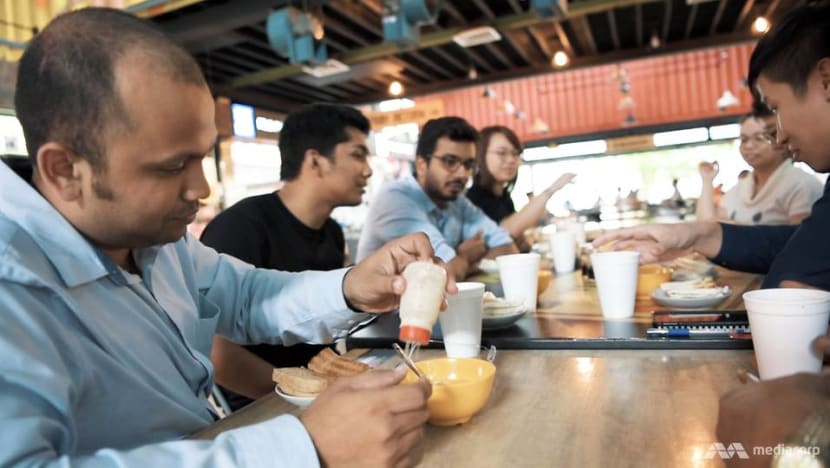
In 2016 the company received an offer from a Colorado-based start-up accelerator to move to the United States. Abhishek rejected it – he has no doubts where he wants Kinexcs to be based.
“Singapore offers the best resources, a reliable and straightforward business environment to come up with a new idea, incubate it and take it to the global market,” he said. He also spoke highly of NTU and the National University of Singapore, whose professors the company received guidance from in its early days.
Kinexcs plans to expand into the Australian and US markets in the next couple of years. This would be a dream come true for Abhishek, who left his hometown at the age of 22.
“I could pursue what I wanted to do in India as well, but the level of people that you would work with, the reputation in the field, the scale of opportunity – Singapore really gives you that international platform,” he said.
This story by CNA Insider was done in collaboration with Gov.sg.


















